By: Rio Tattersall
Five years ago, I heeded a call to come help the Rainbow Crystal Land (RCL) in Costa Rica, which at that time was just beginning. I was fortunate to have caught an echo of all the creations that were ensuing on this land back then— an earthen oven in a spacious kitchen, a cob house, colorful rainbow art all around, many plants were being sown, and busy jungle hippies were happily greeting the cameras. Those were just some of the attractive things I saw on pictures and videos through social media. I’ll admit that it took me a while to show up since I came by bicycle from Fairfax, California. What I found in the mountains of southern Costa Rica was much different than what I’d expected though; although the treasures of my perseverance have paid me back tenfold. Now I am making a call to others, as I’ve already done a couple of times in the past. What we hear through the grapevine doesn’t always resemble reality, and the only constant in reality is that it is changing. Finca Sylvatica has received a boost in growth in the past year while the RCL has withered and wilted with the lack of attention and love. What is the fate of the RCL and Finca Sylvatica? Who is currently on site and how did we get here? What type of help do we need? These are the questions which I will focus this post on.

Inspired by a friend I had cycled with between Montana and British Colombia in 2013 with the Rainbow Bicycle Caravan, I felt called to come help the RCL in Costa Rica the following year. I hadn’t originally thought of riding a bike to Central America but upon telling my “uncle” Richard, who I was living with in Fairfax, my plan to come here he immediately asked, “on a bike?” Thus, the idea was sparked. It took me a few months to prepare my departure and just over a year and a half to ride into the Rainbow Crystal Land on a dark night. Like I mentioned earlier, I had seen media of several happy campers and many projects in action at the RCL. That image gave me strength and put a pep to my peddle, especially in my toughest moments on the road when I was alone and far away from any semblance of comfort. When I finally arrived at the RCL the reality of what was going on here was in stark contrast to my imagined dreams and expectations. One French brother, Arturo, had been attempting to hold up the community and the Rainbow culture mostly by himself, and there were two Ticos who were still learning what Rainbow was all about. Many structures had been built, which was evidence that there had been a surge of energy here at one point. There weren’t enough of us who were motivated to give all of the structures life and function though. I was barely able to learn all the essentials for surviving here before Arturo was forced to leave because of his immigration status in the country. The Ticos also left and in just five months, I became the most experienced individual living on the land. This happened while we were experiencing a surge in population after the Costa Rican annual Rainbow Gathering that year. The swell in population resulted in several people staying for a couple of months, a few people stayed for a few months, and in the end, it was just me and one brother from Luxembourg, Arnauld, who stayed for about six months total. One of the Tico’s came back but he was thieving, and I had to force him out in a difficult ordeal. After which point it was just me, the dog, and the cat. All in all, it was a very unstable and transitory time. I had come to learn how to live in community but instead I came to learn how to be a pioneer.
A community of one person does not exist, neither of two people, and I would argue that it would take at least more than three or four people before we could call ourselves a true community (and a micro one at that!). We’ve had many helping hands who have come by before and during my time— several of whom have stayed for a few months.
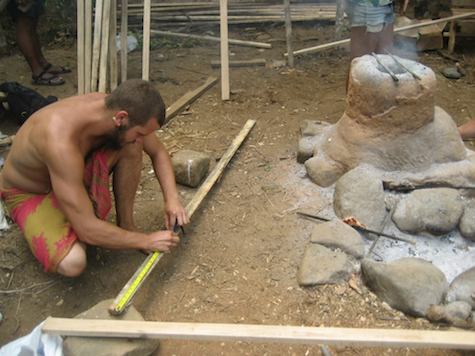
The help that these people provided was invaluable. The work of those before me inspired me to keep at it, and the help of those who’ve shown up since I’ve been here have given me the boosts I needed at the toughest moments. Nevertheless, it was tiring upholding the “community” for an endless number of passer-byers because our goal of permanence was never realized. My let down expectations used to cause me grief over that fact. To cope with my disappointment I’ve largely refrained from calling this place a community (nowadays I usually say “farm”), I haven’t been making calls like this for help lately, and I’ve relinquished the idea that a permanent Rainbow community is going to thrive here— I’d love that scenario, but I’d rather be surprised than constantly disheartened.
A year ago, the last residents of the RCL moved out and we took up residence across the creek in the “Longhouse” on Finca Sylvatica. That’s when the RCL officially became dormant. The owner of the land, Scottino, needed people to take care of the Longhouse which had just been built. Scottino was being deployed on a two-year Peace Corps Masters Program in Jamaica and he wouldn’t be able to be here for the duration of his service. The new “digs” at the Longhouse was far more stable and comfortable than any buildings at the RCL— many of which were already falling apart last year. Naturally the energy flowed over to Finca Sylvatica. Scottino returns next year and he has the intention of living in the Longhouse, and of turning Finca Sylvatica into an academic research center. It is in our best interest to rebuild the structures on the RCL side in this time.
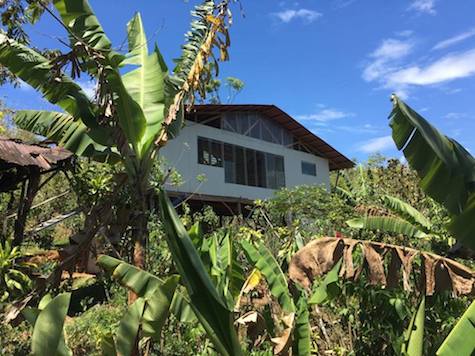
We are calling upon pioneers to help us in this endeavor. We don’t know if the RCL will be revived or if a new community will be built in its place. What is for sure is that we currently have a canvas upon which we can cultivate and create on. As far as the permaculture is concerned, we already have a 14 years of reforestation and landscaping begun since Scottino began working here in 2005. If we don’t act now, then the RCL side will very likely be converted back into Finca Sylvatica and private properties eventually. This may sound like a copout, but it’s already been five years and if a community is to thrive here than continuity and sustenance are required— which means persistent dedication and maintenance. We will never be resilient if our community solely consists of an unsteady string of sporadic and temporary helpers. The thieves, moochers, and “bliss ninnies” have taken their toll as well and our reputation has suffered. I have acted poorly in response to certain challenges and have been over-protective and even brutal in my defense of this place. Without making excuses the “community” has felt heavy on the shoulders when we’ve been few for a long time— even more so when I was alone. I cannot guarantee more than a year of additional service here. Which I plan on focusing mainly on taking care of the Longhouse and the permaculture of this land as a whole. With my partner Rafael we’ve also discussed rebuilding the kitchen and some of the homes on the RCL side. We will need a place to live when Scottino returns if we are to remain on this land. We would like it to be a community and we invite anyone who is looking for a different way of life in nature and who has the commitment to see projects through to their completion.
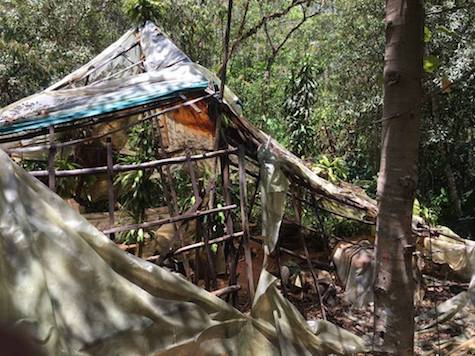
RCL’s reputation and even Rainbow’s has suffered in Costa Rica. Rainbow has unfortunately become synonymous with lazy mooching vagabonds—or something like that. Naturally, rainbows’ seemingly carefree and flamboyantly disheveled ways, cause friction with the Tico’s contrast of impeccably clean and pride at being orderly. Although not all Ticos are the same and we get along well with many of them. It seems however that several folks choose to fixate on the negative aspects of Rainbow Culture while looking right through the positives. Many wonderful things happen here and at Rainbow Gatherings— which is why the reputation situation is sad. Aside from the help we need building structures we also need to recreate our reputation. I’ve only given so much of myself here as I have because Rainbow gave me so much, and because this land has so much of its own magic and sustenance. Rainbow Gatherings and this land both have their own enchantment but together they don’t seem to be working; at least not in a permanent sense. Although glimpses of fusion have occurred where the two flowed together wonderfully. As usual, in my experience, Rainbow works best temporarily. Like a flower that only blooms seasonally.
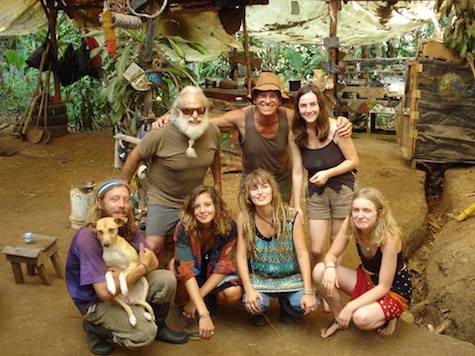
As a pioneer I’ve learned that perhaps the most important trait for survival is persistence. When trying to do something which is radically different and progressive than the norm many forces seem to challenge the dedication and fate of the project. Persistence is the only possibility of surviving these challenges. I just have to stop cutting the African pasture grass for a couple of months and mother nature will assert her dominance once more— reminding me of the importance of persistence. At the end of last year, I spent three months in the US helping my father who’s getting ready to retire. When I returned here the grass had all but eaten the RCL in full. My partner Rafael did a good job maintaining the weeds around the Longhouse, the driveway, and the paths at Finca Sylvatica. However, all of the RCL and many sections of Finca Sylvatica had been left to fend for themselves. This land is so big it is exceedingly difficult for a sprite young chap like myself to maintain on my own, so I can understand what it must be like for a “silver fox” like Rafael. At Finca Sylvatica Scottino has had many more years of influence and the reforestation is far more advanced, which makes managing the weeds easier. On the RCL side we’ve had less of an impact so far, and the pasture grass still reigns supreme over much of it. I pick up the machete once again each time because if my legacy here culminates to at least assuring the survival of some bushes and trees than I will have done something productive in the long-run. I won’t be here to do this forever which is why this call is important if a community is to exist on this land.
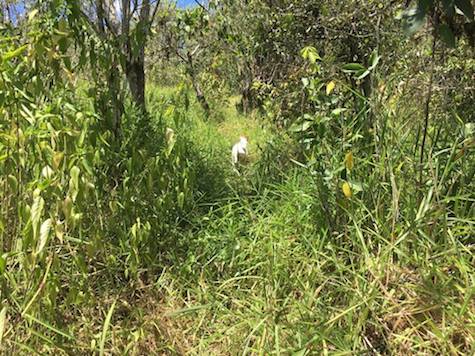
There are currently two permanent members here; myself and Rafael. Rafael was on a spiritual quest when he came upon the RCL over a year ago. He didn’t find what he was looking for as far as a spiritual community is concerned, but he certainly found a place where he could work on his internal growth and his connection to mother nature— both of which invigorate the spirit. Like myself he’s fallen in love with this land and he has persevered here despite the many challenges that we face living in such a natural and wild environment. We would both like to help rebuild a community and the structures by which one can survive and thrive. All the potential for success is at hand. I have already documented the many species we have cultivating and harvesting here on other blog posts in the past. The plants which I would like to focus on in this post however are the “pioneer species.”
There is never a need to sow a pioneer plant in a natural environment— they just show up. They either spread their seeds via long-reach, the wind, the birds, animals, or insects. Often, they appear to materialize out of thin air. Most likely they came flying in with the breeze or they were dropped out of the digestive tract of a living being with ready-made fertilizer. Pioneer species are ones with a keen capacity to interact well with their environment for quick and abundant propagation. They are the species which will show up early and fend off competition whenever there is any perturbed soil or on our tilled and fertile garden beds. Many of these species are important natives which aside from helping us fend off the grasses— by creating a quick shade canopy— they also feed and provide shelter to many native animals and insects. Many of these animals and insects are the pollinators which pollinate the plants that we rely on as well. Several pioneer species also have functions for human use; such as the Saragundi tree (Senna Reticulata) which has potent anti-fungal & anti-bacterial properties. One reason these pioneer species are so good at survival and propagation is because they give back abundantly to their eco-systems. Pioneer species are also finessed at withstanding the storms and the dry-spells. If there are any species which we most need to emulate in this time it is certainly the “pioneers.”
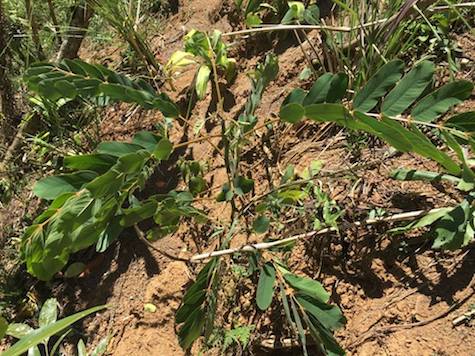
{Saragundi tree (Senna Reticulata)}
Scottino, Rafael, myself, the builders of the RCL, the gardeners, landscapers, artists, and everyone who’ve left a bit of themselves here have been a tiny bit like pioneer species; we’ve flowed through and we’ve left our mark on the landscape. We’ve sown seeds into the ground, we’ve aided in shaping the earth, we’ve created canopies, we added color to the environment, we’ve survived through challenges and we’ve lived at least parts our lives here. It will take nothing short of a resurgence of this type of energy to lift the RCL back up, and to keep it up even more! That’s what pioneer species are best at though— persistence. The pasture grass is a foreign pioneer who constantly threatens our reforestation attempts because of its magnificence at persistence. I suppose that in an abstract way the pasture grass is kind of like the thieves and moochers. The grass constantly pops up to suck out the nutrients and riches while hardening up the fertile soil we make nice for the exotic/sensitive plants and trees. The moochers and thieves pop up to extract our nutrients and riches but in the human realm, and in result they contribute to hardening up our souls by making us not want to share as much. I suppose that exotic and sensitive plant species would be akin to all the foreigners and travelers who we host here. If we don’t soften up and fertilize the ground many plant species don’t survive or thrive here. Just the same as if we don’t make nice living spaces and cozy hang out spots than many people won’t stay here. I love eating exotic fruits and I love sharing time with interesting travelers who pass by. Those aren’t going to be the entities who ensure that this land thrives though— but they’re the entities who will make this place more interesting and diverse. Again, what we need now though are pioneers who will fend off the challengers and who could survive on their own. Our dreams though are of reforestation and community, so we hope that nobody must live here on their own. This is why we need to remove the pasture grass— a species which doesn’t let any other species thrive— and is why we are making this call for more motivated pioneers with a drive to cultivate fertile land!
Hace cinco años, yo respondí a una llamada para ayudar a la Tierra Crystal Arco-Iris (TCA) en Costa Rica, que en aquel momento apenas estaba comenzando. Tuve la suerte de haber captado un eco de todas las creaciones que se estaban produciendo en esta tierra en aquel tiempo: una cocina espaciosa de bamboo, una casa de barro, coloridas obras de arte del arco iris, muchas plantas se estaban sembrando y hippies obreros de la selva estaban saludando alegremente a las cámaras. Esas fueron solo algunas de las cosas atractivas que vi en fotos y videos a través de las redes sociales. Admito que tardé un poco en llegar desde que salí en bicicleta de Fairfax, California. Lo que encontré en las montañas del sur de Costa Rica fue muy diferente a lo que esperaba; aunque los tesoros de mi perseverancia me han pagado diez veces. Ahora estoy llamando a otros, como ya lo he hecho un par de veces en el pasado. Lo que escuchamos a través de la vid no siempre se parece a la realidad, y la única constante en la realidad es que está cambiando. Finca Sylvatica ha recibido un aumento en el crecimiento en el último año, mientras que RCL se ha marchitado con la falta de atención y amor. ¿Cuál es el destino de la RCL y Finca Sylvatica? ¿Quién está actualmente en el sitio y cómo llegamos aquí? ¿Qué tipo de ayuda necesitamos? Estas son las preguntas en las que enfocaré este post.
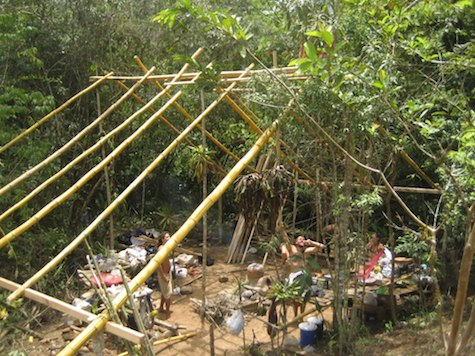
Inspirado por un amigo con quien yo había pedaleado entre Montana, USA y Colombia Británica, Canada en 2013 con la Caravana Arco-Iris de Bicicletas, me sentí llamado a ayudar a la TCA en Costa Rica el año siguiente. Al principio no había pensado en ir de bicicleta hasta América Central, pero al decirle a mi “tío” Richard, con quien vivía en Fairfax, mi plan de venir aquí inmediatamente me preguntó: “¿en una bicicleta?”. Por lo tanto, la idea fue encendido. Me llevo unos meses para preparar mi partida y un poco más de un año y medio pedaleando hacia la TCA cuando finalmente llegue en una noche oscura. Como mencioné anteriormente, había visto fotos y videos de varias personas felices y muchos proyectos en acción en la TCA. Esa imagen me dio fuerza y me animó, especialmente en los momentos más difíciles en la carretera cuando estaba solo y lejos de cualquier aspecto de comodidad. Cuando finalmente llegué al TCA, la realidad de lo que estaba sucediendo aquí estaba en marcado contraste con mis sueños y expectativas imaginados. Un hermano francés, Arturo, había estado tratando de sostener a la comunidad y la cultura del Arco Iris solo, y había dos Ticos que todavía estaban aprendiendo de qué se trataba el Arco Iris. Se habían construido muchas estructuras, lo que era evidencia de que había habido una oleada de energía aquí en un momento dado. Sin embargo, no había suficientes de nosotros que estuviéramos motivados para dar vida y función a todas las estructuras. Apenas pude aprender todo lo esencial para sobrevivir aquí antes de que Arturo se viera obligado a irse debido a su estatus migratorio en el país. Los ticos también se fueron y en solo cinco meses, me convertí en la persona más experimentada que vivía en la tierra. Esto sucedió mientras estábamos experimentando un aumento en la población después de la reunión anual del Arco-Iris en Costa Rica aquel año. El aumento de la población provocó que varias personas se quedaran por un par de meses, unas pocas personas se quedaron por varios meses y, al final, fuimos solo yo y un hermano de Luxemburgo, Arnauld, quien quedo durante aproximadamente seis meses en total. Uno de los Tico regresó pero estaba robando, y tuve que obligarlo a salir en una dura prueba. Después de lo cual fui yo, el perro y el gato. En definitiva, fue un tiempo muy inestable y transitorio. Había venido a aprender a vivir en comunidad, pero en vez de eso, aprendí a ser un pionero.
(Yo en Baja California bajando hacia la Tierra Crystal Arco-Iris en 2014)
No existe una comunidad de una persona, ni de dos personas, y yo diría que se necesitarían al menos más de tres o cuatro personas antes de que podamos llamarnos una verdadera comunidad (¡y una comunidad micro seria!). Hemos tenido muchas manos que nos han ayudado antes y durante mi tiempo, varias de las cuales han permanecido por algunos meses.

La ayuda que estas personas proporcionaron fue invaluable. El trabajo de los que me precedieron me inspiró a seguir adelante, y la ayuda de los que han aparecido desde que estoy aquí me han dado los refuerzos que necesitaba en los momentos más difíciles. Sin embargo, ha sido agotador defender la “comunidad” para una cantidad interminable de gente de paso porque nuestro objetivo de permanencia nunca se realizó. Mis expectativas decepcionantes solían causarme pena por ese hecho. Para hacer frente a mi decepción, me he abstenido en gran medida de llamar a este lugar una comunidad (en la actualidad, por lo general, digo “finca”). Últimamente no he estado haciendo llamadas de este tipo en busca de ayuda, y he renunciado a la idea de que una comunidad Arco-Iris va a prosperar aquí. Me encantaría ese escenario, pero preferiría que me sorprenda a que me desanime constantemente.
Hace un año, los últimos residentes de la TCA se mudaron y establecimos una residencia al otro lado del arroyo en la “Casa Larga” da Finca Sylvatica. Fue entonces cuando el TCA oficialmente quedó inactivo. El dueño de la tierra, Scottino, necesitaba que la gente se cuidara la Casa Larga, que acababa de construirse. Scottino estaba siendo desplegado en un programa de maestría de dos años con el Cuerpo de Paz en Jamaica y no podría estar aquí por la duración de su Servicio. El nuevo chante en la Casa Larga es mucho más estable y cómoda que cualquier otro edificio en la TCA: Muchos de los cuales ya se estaban cayendo a pedazos el año pasado. Naturalmente, la energía fluyó hacia Finca Sylvatica. Scottino regresa el próximo año y tiene la intención de vivir en la Casa Larga, y de convertir a Finca Sylvatica en un centro de investigacion academica. Esta en nuestro mejor interés reconstruir las estructuras en el lado de la TCA en este momento.

Estamos haciendo una llamada a pioneros para que nos ayuden en este esfuerzo. No sabemos si la TCA será revivido o si una nueva comunidad se construirá en su lugar. Lo que es seguro es que actualmente tenemos un cuadro sobre qual podemos cultivar y crear en cima. Al respecto a la permacultura, ya tenemos 14 años de reforestación que comenzó desde que Scottino empezó a cultivar aquí en 2005. Si no actuamos ahora, es muy probable que el lado de la TCA se convertirá de nuevo en Finca Sylvatica y propiedades privadas con el tiempo. Esto puede sonar como una excusa, pero ya han pasado cinco años y si una comunidad va prosperar aquí, se requiere continuidad y sustento. Lo que significa dedicación y mantenimiento persistente. Nunca seremos resistentes si nuestra comunidad consiste únicamente de una cadena inestable de ayudantes esporádicos y temporales. Los ladrones, y los vagos han tomado su peaje también y nuestra reputación ha sufrido. Yo he actuado mal en respuesta a ciertos desafíos y he sido sobreprotector e incluso brutal en mi defensa de este lugar. Sin poner excusas la “comunidad” ha sentído pesado sobre los hombros cuando hemos sido pocos durante mucho tiempo, incluso más cuando estaba solo. No puedo garantizar más de un año de servicio adicional aquí. El cual planeo enfocarme principalmente en cuidar la Casa Larga y la permacultura de esta tierra en su conjunto. Con mi compañero Rafael también hemos discutido la reconstrucción de la cocina y algunas de las casas en el lado TCA. Necesitaremos un lugar para vivir cuando Scottino regrese si vamos permanecer en esta tierra. Nos gustaría que fuera una comunidad e invitamos a cualquiera que esté buscando un lugar diferente con una forma de vida natural y que tiene el compromiso de llevar a cabo los proyectos hasta su finalización.

La reputación de la TCA e incluso del Arco-Iris ha sufrido en Costa Rica. Desafortunadamente, Arco-Iris se ha convertido en ser sinónimo con vagabundos perezosos, o algo así. Naturalmente, los del Arco Iris parecen ser despreocupados y con sus estilos extravagantemente despeinados, causan fricción con el contraste del Tico de ser impecablemente limpios y con su orgullo de ser ordenados. Aunque no todos los Ticos son iguales y nos llevamos bien con muchos de ellos. Parece sin embargo que varias personas optan por fijarse en los aspectos negativos de la cultura del Arco Iris mientras miran a través de los positivos. Muchas cosas maravillosas suceden aquí y en los Encuentros Arco-Iris, por lo que la situación de la reputación es triste. Aparte de la ayuda física, necesitamos recrear nuestra reputación. Yo solo he dado tanto de mí aquí como lo he hecho porque el Arco-Iris me ha dado tanto, y porque esta tierra tiene mucho de su propia magia y sustento. Encuentros Arco-Iris y esta tierra tienen su propio encanto, pero juntos no parecen funcionar. Al menos no en un sentido permanente. Aunque se han producido destellos de fusión donde los dos han fluido juntos maravillosamente. En mi experiencia Arco-Iris funciona mejor temporalmente. Como una flor que sólo florece estacionalmente.

Como pionero, he aprendido que tal vez el rasgo más importante para la supervivencia es la persistencia. Cuando tratamos de hacer algo que es radicalmente diferente y progresivo que la norma, muchas fuerzas parecen desafiar a la dedicación y destino del proyecto. La persistencia es la única posibilidad de sobrevivir a estos desafíos. Solo tengo que deja de cortar el pasto africano por un par de meses y la madre naturaleza afirmará su dominio una vez más, recordándome la importancia de la persistencia. A fines del año pasado, pasé tres meses en los Estados Unidos ayudando a mi padre que se está preparando para retirarse. Cuando regresé aquí, el zacate casi había comido la TCA en su totalidad. Mi compañero Rafael hizo un buen trabajo manteniendo el monte alrededor de la Casa Larga, la calle de entrada y los caminos en Finca Sylvatica. Sin embargo, todo la TCA y muchas secciones de Finca Sylvatica se habían dejado a la defensa de sí mismos. Esta tierra es tan grande que es extremadamente difícil para un joven como yo mantenerla en mi propia, así que puedo entender cómo debe ser para un “zorro plateado” como Rafael. En Finca Sylvatica Scottino ha tenido muchos años más de influencia y la reforestación es mucho más avanzada, lo que hace que el manejo del monte sea más fácil. En el lado de la TCA hemos tenido menos impacto hasta ahora, y el pasto todavía reina por encima de mucho. Recojo el machete una vez más cada vez porque si mi legado aquí culmina al menos para asegurar la supervivencia de algunos arbustos y árboles, habré hecho algo productivo a largo plazo. No estare aqui para hacer esto para siempre, por lo qual esta llamada es importante si una comunidad va existir en esta tierra. Actualmente hay dos miembros permanentes aquí; yo y Rafael.

Rafael estaba en una búsqueda espiritual cuando llegó a la TCA hace más de un año. No encontró lo que buscaba en sentido de una comunidad espiritual, pero ciertamente encontró un lugar donde podría trabajar en su crecimiento interno y su conexión con la madre naturaleza, ambas vigorizan el espíritu. Como yo, se ha enamorado de esta tierra y ha perseverado aquí a pesar de los muchos desafíos que enfrentamos viviendo en un ambiente tan natural y salvaje. Nosotros quisiera ayudar a reconstruir una comunidad y las estructuras mediante las cuales una puede sobrevivir y prosperar. Todo el potencial para el éxito está a la mano. Ya he documentado las muchas especies que tenemos cultivando y cosechando aquí en otras publicaciones del blog en el pasado. Las plantas en las que me gustaría centrarme en este post sin embargo son las “especies pioneras”.
Nunca es necesario sembrar una planta pionera en un entorno natural, simplemente aparecen. Se propagan sus semillas a través del largo alcance, el viento, las aves, los animales o los insectos. A menudo, parecen materializarse de la nada. Lo más probable es que vinieran volando con la brisa o fueron abandonados del tracto digestivo de un ser vivo que paso por allá, con fertilizante ya preparado. Las especies pioneras son aquellas con una gran capacidad para interactuar bien con su entorno. Para una rápida y abundante propagación. Son las especies que aparecerán temprano y se prosperan en frente de la competencia. Siempre que haya suelo perturbado o en nuestros lechos de jardín fértiles y labrados ellos llegan. Muchas de estas especies son importantes nativos que además de ayudarnos a controlar los pastos, al crear un dosel de sombra rápida, también alimentan y proporcionan refugio a muchos animales e insectos nativos. Muchos de estos animales e insectos son los polinizadores que
polinizan las plantas de las que dependemos también. Varias especies pioneras también tienen funciones para uso humano; tales como el Árbol de Saragundi (Senna Reticulata) que tiene potentes propiedades antifúngicas y antibacterianas. Una razon por la qual las especies pioneras son tan buenas en la supervivencia y la propagación es porque devuelven abundantemente a sus ecosistemas. Las especies pioneras también son finas en soportar las tormentas y los períodos de sequía. Si hay alguna especie que nosotros necesitan emular en este momento definitivamente son las “pioneras”.

Scottino, Rafael, yo, los constructores de la TCA, los jardineros, obreros, artistas y todos los que han dejado un poco de ellos aquí han sido un poco como especies pioneras; Hemos fluido y hemos dejado nuestra marca en este paisaje. Hemos sembrado semillas en el suelo, hemos ayudado a dar forma a la tierra, hemos creado toldos, agregamos color al ambiente, hemos sobrevivido a través de desafíos y hemos vivido al menos partes de nuestras vidas aquí. Solo un resurgimiento de este tipo de energía puede levantar la TCA otra vez y para mantenerlo aún más! Eso es lo que mejor hacen las especies pioneras: la persistencia. El pasto es un pionero extranjero que amenaza constantemente nuestros intentos de reforestación debido a su magnificencia en la persistencia. Supongo que de una manera abstracta, el pasto es algo así como los ladrones y vagos. La hierba aparece constantemente para succionar los nutrientes y las riquezas del suelo, mientras lo endurecen, igual que los ladrones y vagos que emergen para extraer nuestros nutrientes y riquezas pero en el reino humano, y como resultado contribuyen a endurecer nuestras almas haciendo que no queramos compartir tanto. Supongo que las plantas exóticas y sensibles serían similares a todos los extranjeros y viajeros que alojamos aquí. Si no ablandamos y fertilizamos el suelo muchas especies de plantas no sobreviven o prosperan aquí. Igual que si no hacemos buenos espacios de vida y lugares acogedores para pasar el rato muchas personas no se quedarian aquí. Me encanta comer frutas exóticas y me encanta compartir el tiempo con interesantes viajeros que pasan. Esas no serán las entidades que garantizarán que esta tierra prospere, aunque son las entidades las que hacen este lugar más interesante y diverso. Una vez más, lo que necesitamos ahora, sin embargo son pioneros con la capacidad de encarar a los retos y que podrían sobrevivir solos. Aunque nuestros sueños son de reforestación y comunidad; esperamos que nadie tendría que vivir aquí solo. Por eso necesitamos eliminar el pasto, una especie que no permite que ninguna otra especie prospere, y es por eso que estamos haciendo este llamado para pioneros con ganas de cultivar tierras fertiles! Posted in Finca Sylvatica & Rainbow Crystal Land.





